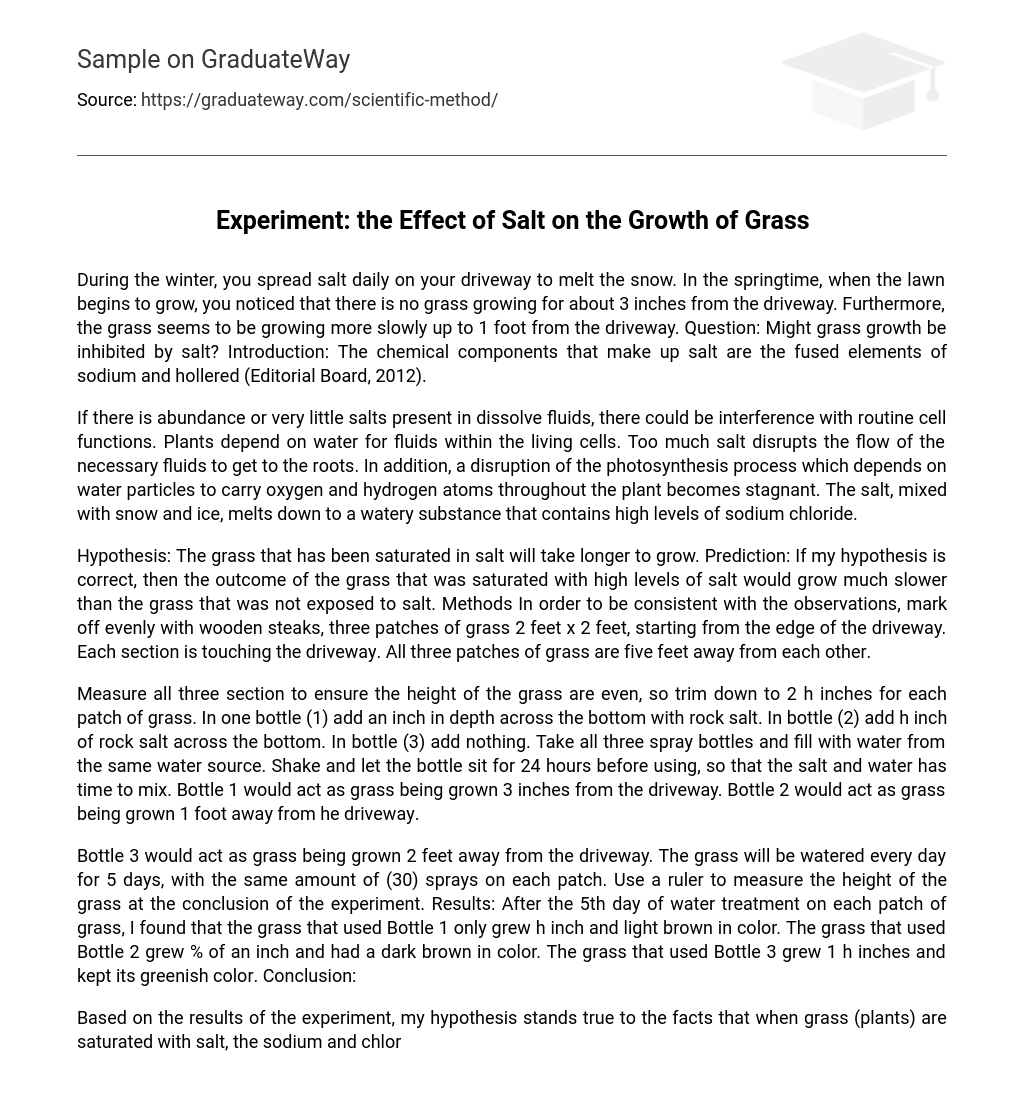During the winter months, salt is regularly applied to the driveway to dissolve snow. However, in the spring, it becomes evident that grass does not grow within a three-inch radius from the driveway and appears to grow at a slower rate up to one foot away. This raises the question of whether salt hinders grass growth. The chemical composition of salt consists of sodium and hollered elements (Editorial Board, 2012).
If there is a high concentration or a low concentration of salts in dissolved fluids, it can affect normal cell functions. Living cells rely on water for their fluids. Excessive salt hinders the movement of necessary fluids to reach the roots. Furthermore, it results in a halt in the photosynthesis process, which requires water particles to transport oxygen and hydrogen atoms throughout the plant. When salt combines with snow and ice, it melts into a liquid containing high levels of sodium chloride.
Hypothesis: The grass soaked in salt will have a slower growth rate.Prediction: If my hypothesis is true, then the grass treated with high levels of salt will grow more slowly than the untreated grass.
Methods: To maintain consistency in observations, use wooden steaks to mark off three equal 2×2 feet grass patches, starting from the driveway’s edge. Each patch should be adjacent to the driveway and spaced five feet apart from each other.
To achieve even grass height, measure all three sections and trim the grass down to 2 inches. In one bottle (1), add rock salt with a depth of 1 inch at the bottom. In bottle (2), add rock salt with a depth of h inch at the bottom. Bottle (3) should be left empty. Fill all three spray bottles with water from the same source. After shaking the bottles, allow them to sit for 24 hours before use to ensure that the salt and water are adequately mixed. Bottle 1 represents grass grown 3 inches away from the driveway, while bottle 2 represents grass grown 1 foot away from the driveway.
Bottle 3 would serve as a representation of grass growing 2 feet away from the driveway. Throughout a 5-day period, the grass would be watered daily with 30 sprays applied to each patch. The height of the grass at the end of the experiment was measured using a ruler. The results indicated that after the 5th day of water treatment, the grass treated with Bottle 1 only grew h inch and had a light brown color. The grass treated with Bottle 2 grew % of an inch and had a dark brown color. On the other hand, the grass treated with Bottle 3 grew 1 h inches and maintained its greenish color. As a conclusion:
According to the experiment, it is confirmed that when grass (plants) is saturated with salt, the blend of sodium and chloride disrupts the flow of H2O in the grass roots (Roadside Vegetation, 2011). Moreover, the application of high sodium affects the plant’s growth by altering the soil composition and preventing water and air absorption by the roots. To resolve this issue, one can either install a barrier along the driveway or promptly treat contaminated grass with growth fertilizer as a preventive measure.





